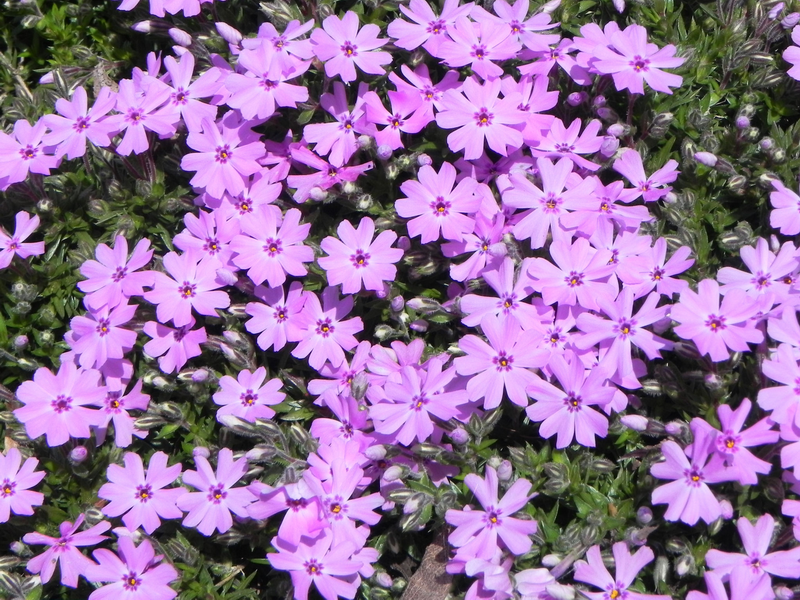Creeping Phlox
Phlox subulata
Click here to download a PDF of this plant information page (for printing).

Sun Exposure: Full Sun, Part Sun
Season of Interest: Spring, Summer, Fall
Bloom Time: March - April
Bloom Color: White to Purple
Height: 4 to 6 in.
Spread: 24 in.
Spacing: 36 in.
Water Needs: Average
Maintenance: None
Soil Type: Clay, Loam, Sandy, Rocky
Soil pH: Acidic, Neutral
Soil Drainage: Well drained
Pests: None
Diseases: None
Wildlife: Bees, Butterflies, Hummingbirds

Description:
Creeping Phlox, also known as Thrift, makes a stunning addition to any garden or yard. With their spreading nature, you can plant a few creeping phlox plants and watch as the perennial plants slowly create a carpet of vibrant spring color. This phlox has prickly, needle-like leaves that produce a prolific blanket of spring blooms reaching about 6 inches tall. The flowers tend to have dark markings toward the center and notched petals. Are you trying to fill unsightly spaces where nothing else will grow, then this is the plant for you. For more information see:
plants.ces.ncsu.edu/plants/phlox-subulata
Care and Growing Tips:
Creeping phlox does not require highly fertile soil. However, it benefits from a slow-release, organic fertilizer in areas where soils are very depleted. Creeping phlox is relatively deer and pest-resistant. Annual pruning will ensure abundant blooms every spring, as well as help to keep disease at bay. As the plants age, dead growth accumulates underneath the upper layer of verdant, flowering stems. Pruning out the old, brittle growth can aid the plants in regenerating and reaching their full potential. Simply lift up the healthy top growth and use pruners to snip dead stems back to ground level.